2020OCTOBER An Interactive Place Study STREETSAHEAD

Tmeg.bartholomew@era-co.comLondon,MegContactsBartholomewUK+442072911477 ERA-CO.COM John TJohn.Prentice@woodsbagot.comSydney,PrenticeAustralia+61292492590 WOODSBAGOT.COM Sarah TSarah.Kay@woodsbagot.comSydney,KayAustralia+61292492590 COPYRIGHT © ERA-CO + WOODS BAGOT 2020 All Rights Reserved. No material may be reproduced without prior permission. ofWellnessStateNew
AheadStreets
As the pandemic reframes how we think about our cities, the design feasibility of various strategies to pedestrianise streets has been widely debated. ERA proposes some bold strategies for Sydney and explores their impact from a city-wide planning and placemaking perspective.
Sampling 11 LGAs in Sydney, can we establish if a New State of Wellness for NSW will not only influence the liveability and aesthetics of our neighbourhoods but also the economic wellbeing of our citizens? PlaceInteractiveStudyby
An
SummaryExecutive
A surprising benefit of lockdown has been urban streets growing quieter. Once filled with white knuckles on steering wheels, anxious mapchecking, and the occasional bout of road rage, many of our avenues, lanes and boulevards quickly accommodated our lives spilling out onto them.
ERA-CO + WOODS BAGOT Streets Ahead / 4
But while recent studies have shown idyllic renders of a car-free future, what does this really mean to the people and households of Sydney?
What could Sydney’s strategy be to maintain the success of our reclaimed streets? Should it close its main streets like London or make car free zones around its urban centres like Copenhagen?
Woods Bagot commissioned ERA-co to interrogate the possibility of increasing and diversifying usage of green space, and to model the impact on people and households across broader Sydney.
Retaining main thoroughfares and closing all quiet community streets allows them to become vibrant places for local communities by creating more space for parks, playgrounds and market gardens.
This could take up to 100,000 cars off the road – equal to almost 30 percent of residents' cars from the study area – resulting in almost $1.3 billion in yearly household savings.
A key finding is that if rolled out across a wider area, closing quiet streets in this way would satisfy the NSW Premier’s priority to increase the proportion of homes in urban areas that are within 10 minutes’ walk of quality green, open and public space by 10 percent by 2023.
In support of the hope for a greener, cooler future, de-paving quiet streets within 800 metres of major public transport stops would put 530,000 Sydneysiders within 300 metres of this new public green space. This is 260,000 more people Atthan currently.leastanother 80,000 trees could be planted, further reducing the heat Compellingly,island effect. the scenario represents an increase in life satisfaction that could equate to $2.9 billion annually.
From Barcelona to Bogotá, cities around the developed world are instigating measures to reduce car usage and retain, within reason, this more peaceful state. Put simply, some of our streets are better off without cars.
ERA-CO + WOODS BAGOT Streets Ahead / 5
Proposition
What would it mean if Sydney became more locally focused? With a higher uptake by employers of working from home and flexible working hours, time spent at home will increase and, in turn, Sydney will become more localised.
As a result, public transport would evolve into a convenience rather than a commute – becoming a pleasant experience thanks to the expected reduction in peak time demand and greater distribution of PT travel across the day.
The notion of sharing crowded, confined public spaces for potentially extended periods of time will play heavily on the minds of a public now attuned to maintain physical distance, yet the long-term prosperity of our cities and planet depends upon its success. Covid-19 has shown that many of us can work effectively from home which suggests that if we stay more local, and adopt behaviour change around public and active transport, the need for car use will diminish.
ERA-CO + WOODS BAGOT Streets Ahead / 6
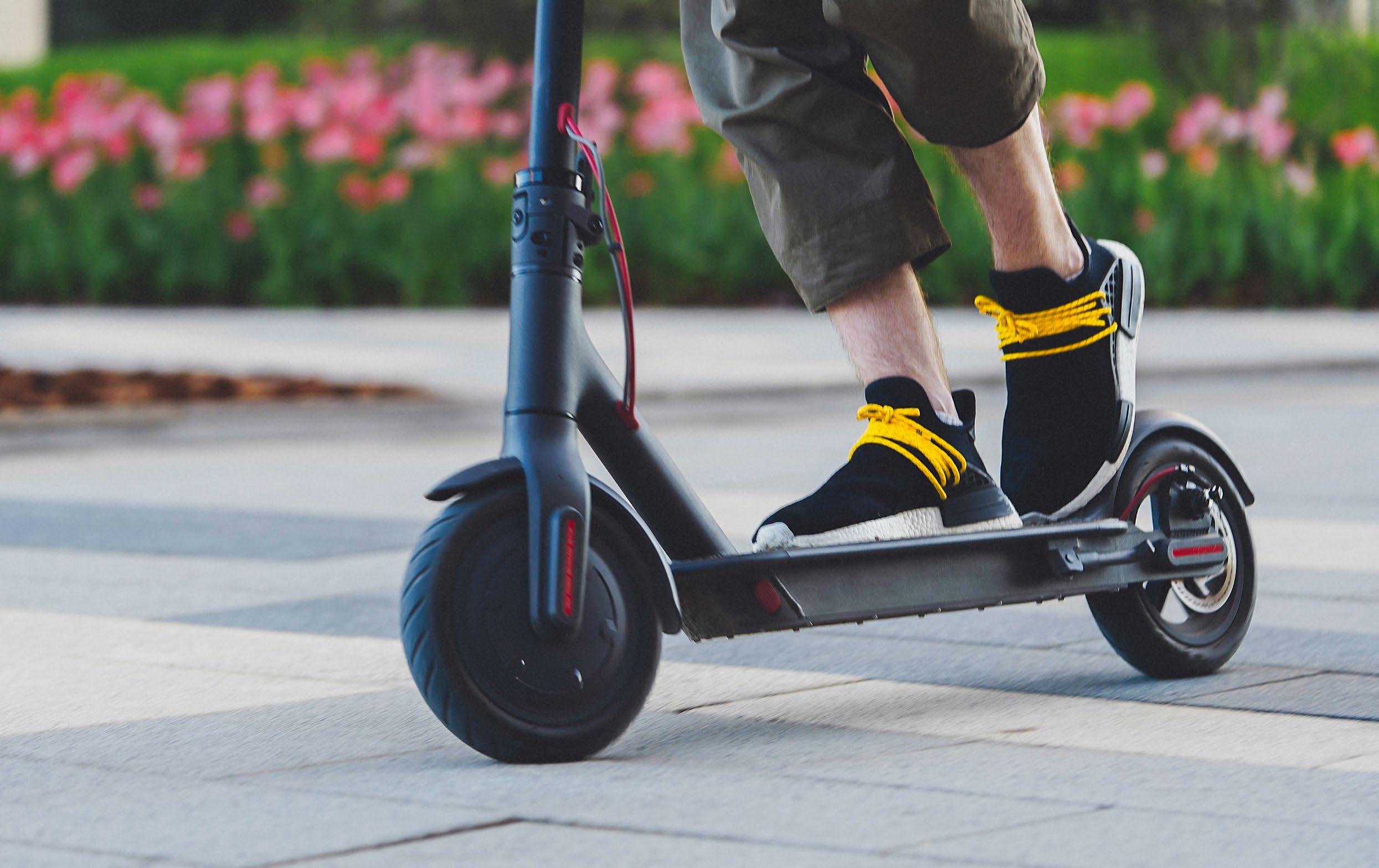
ERA-CO + WOODS BAGOT Streets Ahead / 7 Right now, it’s possible to put strategies in place that ensure: • Distributed working – working from home, the office or anywhere – becomes the new norm • Our transport hubs become local neighbourhood havens • We positively impact our wellbeing by having more nature close to home • Locally sourced produce becomes street sourced – available right outside your front door • The critical 'first and last miles' of transport are the best miles
Methodology
We began by imagining what it would mean if certain streets remained car free and, instead, were converted into tree lined parks and market gardens. What could we use that space for? What savings would households make if they didn’t have to finance cars? Overall, what impact would this change have on our wellbeing?
We started our analysis with 11 key local government areas across the broader Sydney area. (The same approach can be applied to many other cities.)
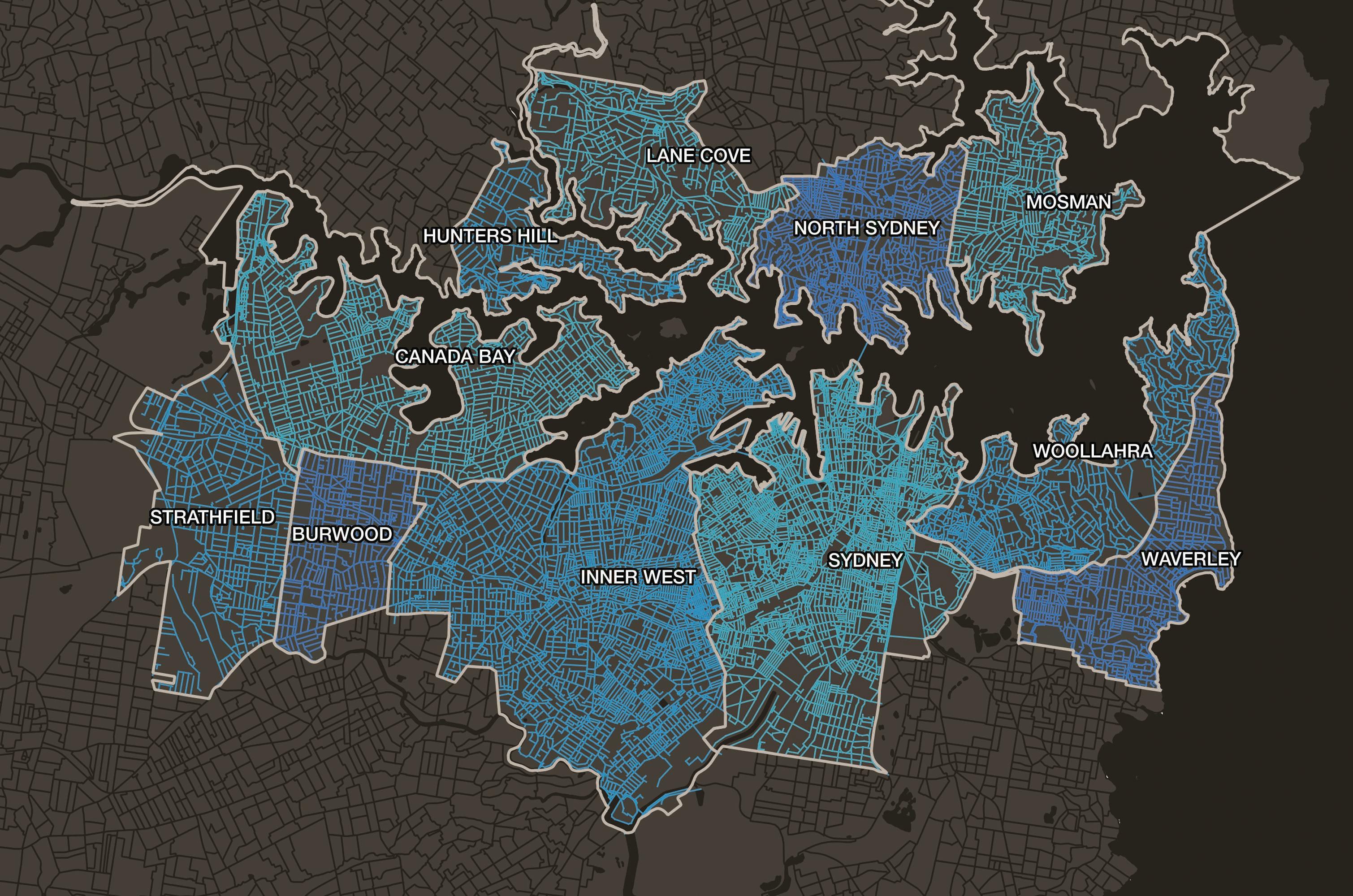 11 LGA areas used in this study
11 LGA areas used in this study
ERA-CO + WOODS BAGOT Streets Ahead / 8
Analysis
Across the city, we divided streets into four key categories according to their potential to connect key routes and destinations:
01 multiscale – those used by both local and cross city traffic
02 main – the routes that are used mainly to cross the city.
03 secondary – routes that are not global but are still important on a local neighbourhood level
04 quiet – routes that are only used by residents and not generally for through traffic (shown as purple in the catchment maps)
Setting the level of quiet streets can be dialled up or down to set a level that is acceptable for Predominantly,citizens.duringlater stages of
restrictions worldwide, quiet streets saw an increase in pedestrian and neighbourhood activities.
However, some cities have chosen to permanently shut down more of the main or even multi scale type streets. We considered both scenarios as applied to Sydney.
Classification of streets by movement potential (quiet streets not shown)

ERA-CO + WOODS BAGOT Streets Ahead / 9

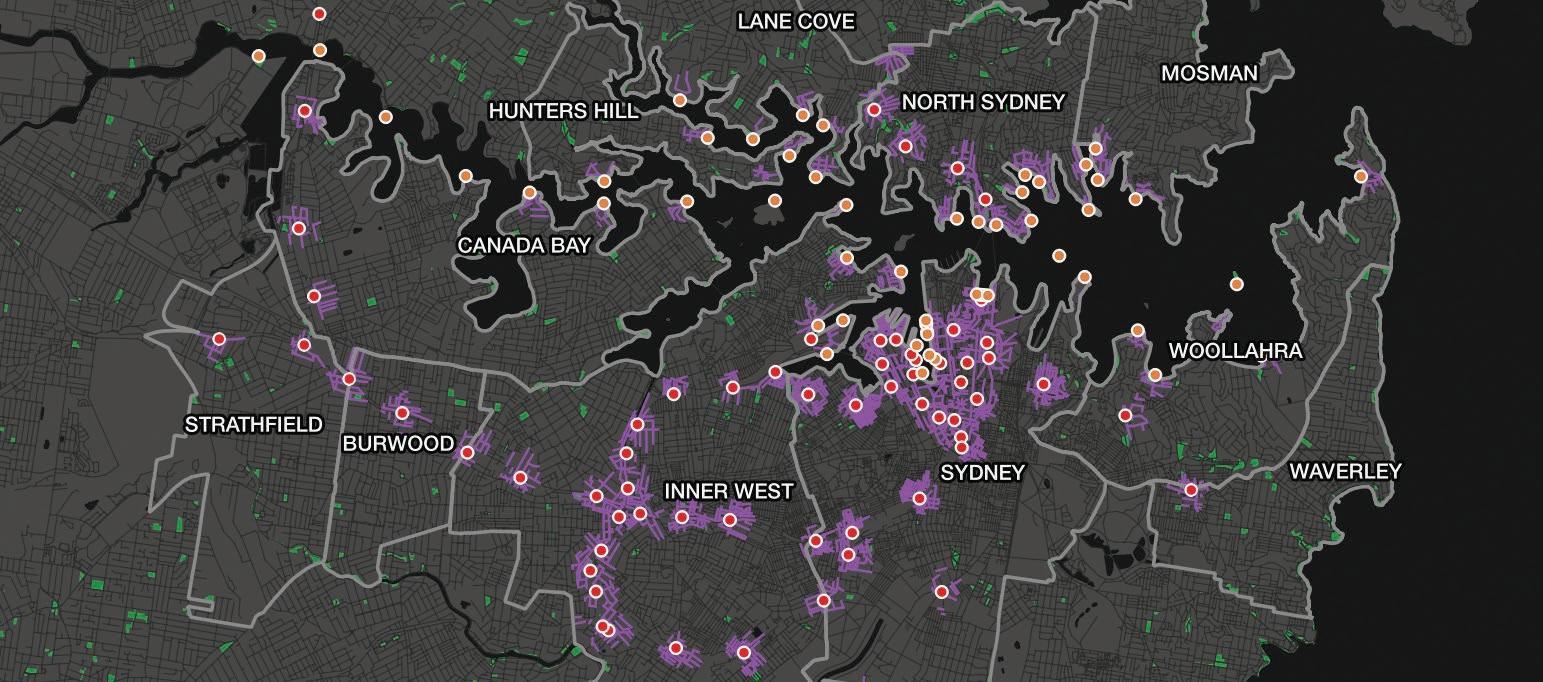
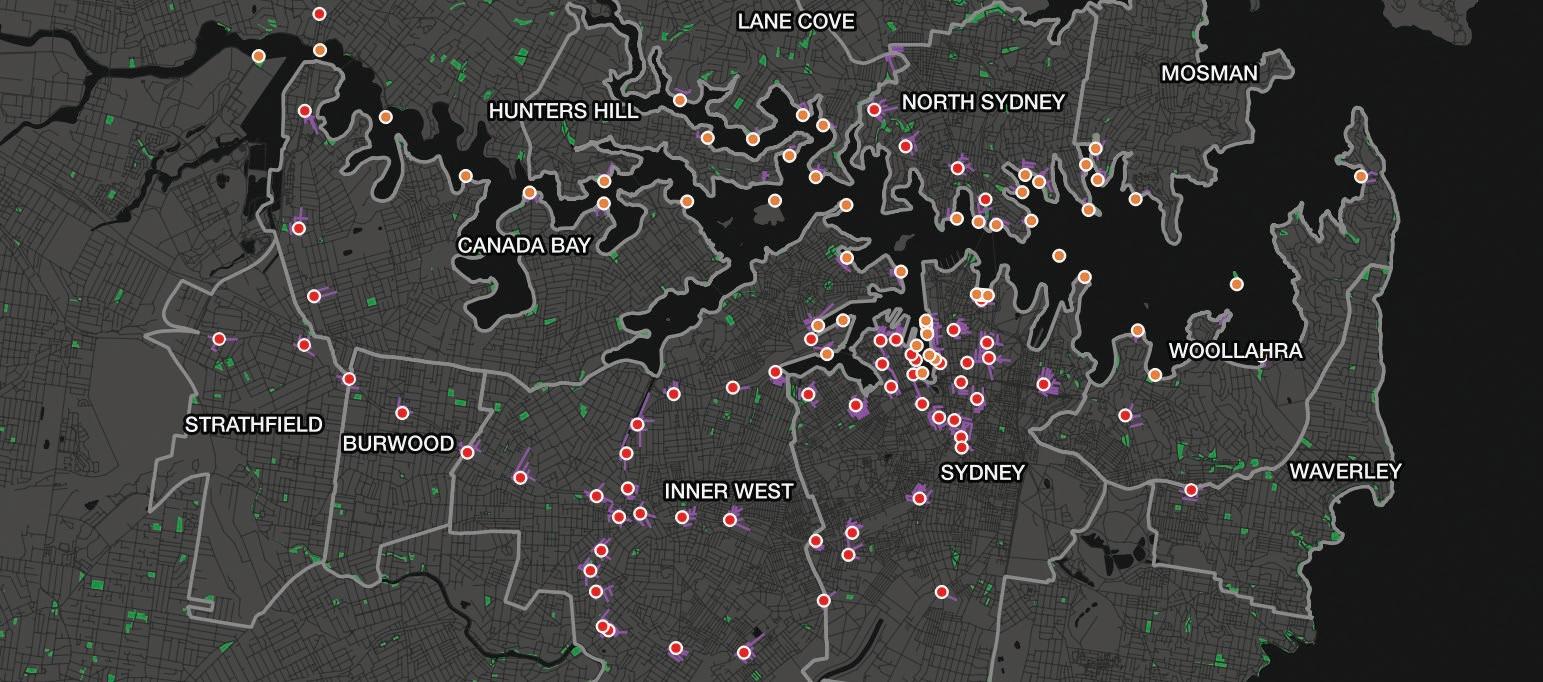
ERA-CO + WOODS BAGOT Streets Ahead / 10 600m from public transport 400m from public transport 200m from public transport
ScenarioCommunity spaces –turning quiet streets into parks and market gardens
530kGreeningquietstreets
within 800m
of major public transport stops will de-pave over 30% of street area taking 100,000 cars off the road.
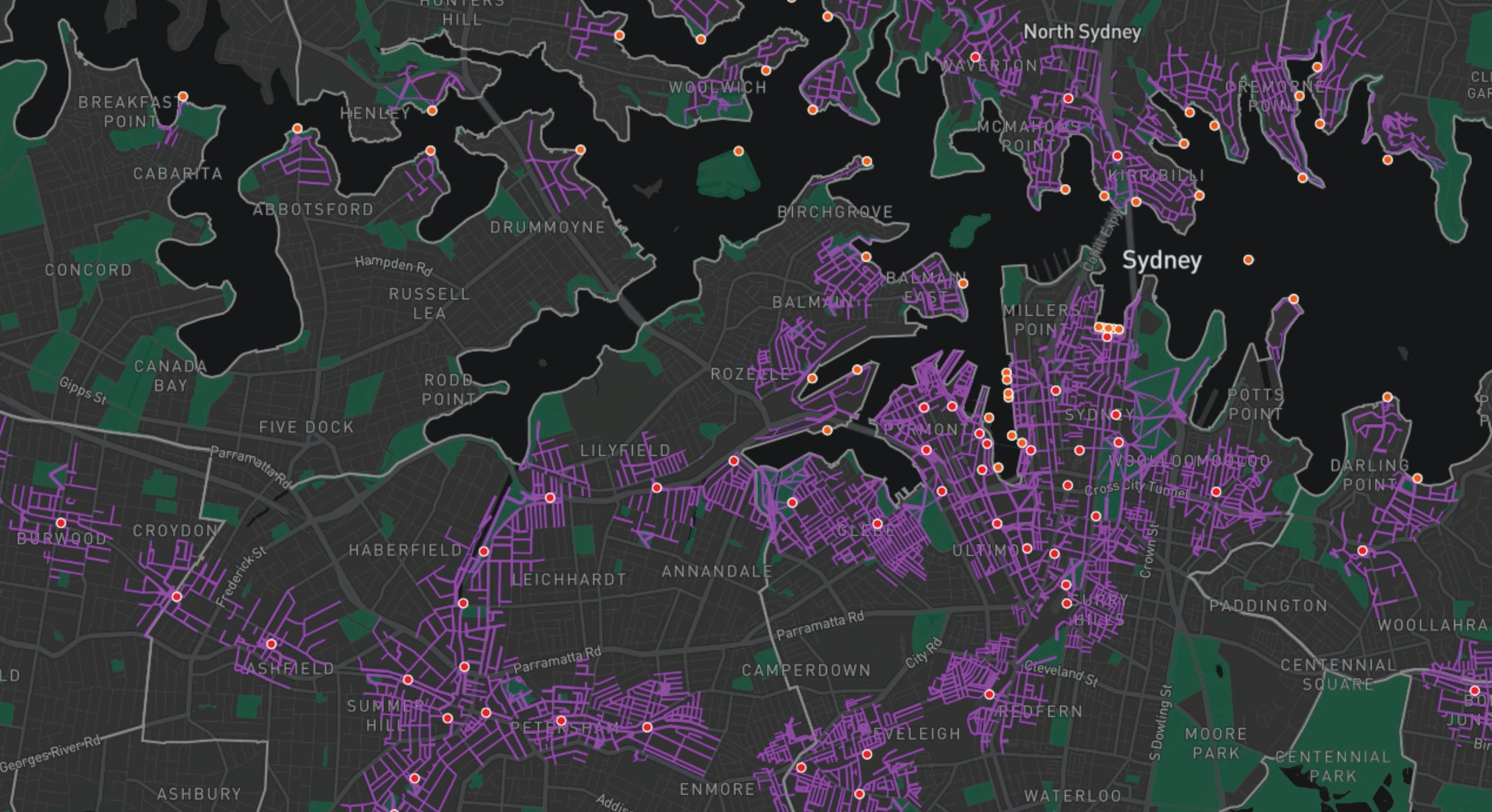
530,000 people will have access to this new green space which is 260,000 more people within 300m of 1ha of space who weren't before.green
Odds-on, streets that are classified as low movement potential are very quiet residential streets – often the kind that fade out into one-way-streets or seldomused backstreets. Removing traffic from these streets, other than emergency and ability related access, allows them to become ‘play streets’ or additional –and most welcome – urban ‘green space’ because their evolution into such spaces does not impact the livelier arteries of the city’s streetscape.
For this study the movement level for quiet streets was set at an academically recognised level, however a more conservative level can be adopted
Again,as required.itisimportant to prioritise only streets with good public transport access. Here, we prioritised those closest to rail and ferry stops, and streets within 200, 400, 600 and 800 metres (overall within 15 minutes' walk) from a transport stop. This highlights streets to be further investigated on a case by case basis to determine whether greening is appropriate for that local area.
Quiet streets with lower movement potential within 800m from major public transport stops
ERA-CO + WOODS BAGOT Streets Ahead / 11
ERA-CO + WOODS BAGOT Streets Ahead / 12 There is the potential for removing hard-surfacing and reducing the heat island effect, as well as for planting more trees. The addition of this amount of new green space in Sydney would increase access for 530,000 people to at least 1 hectare of cooler, more community-minded green space. This is 260,000 more people within 300 metres of generous green space than currently. In research done in the UK, access to at least 1 hectare of green space within 300 metres has been linked to a 0.8 increase in life satisfaction.1 While more research is most certainly needed to determine the exact impact of access to green space on life satisfaction for the citizens of NSW, for the purposes of this study we have applied an equal amount. Using an exploratory income and wealth equivalency method2 derived from NSW data3, the forecasted increase in wellbeing for these residents could range between $1.2 billion and $2.9 billion a year (calculated on all positively affected households). Streets can become play spaces for local kids or significant areas can be turned into productive market gardens for food production. Pedestrianising residential streets also discourages car ownership by residents –replacing the need for a ‘everyday’ car with convenient amenity and quick access to public transport. These impacts have implications for family household spending, with 100,000 fewer cars saving households up to $1.3 billion annually from the cost of keeping a motor vehicle, despite a likely increase and vegetables.homeanotheryear,upmarketTurningpublic transport spending.instreetsintoproductivegardenscouldfeedto130,000familiesperpotentiallysavingthem$220millionbyprovidingstreetgrownfreshfruit

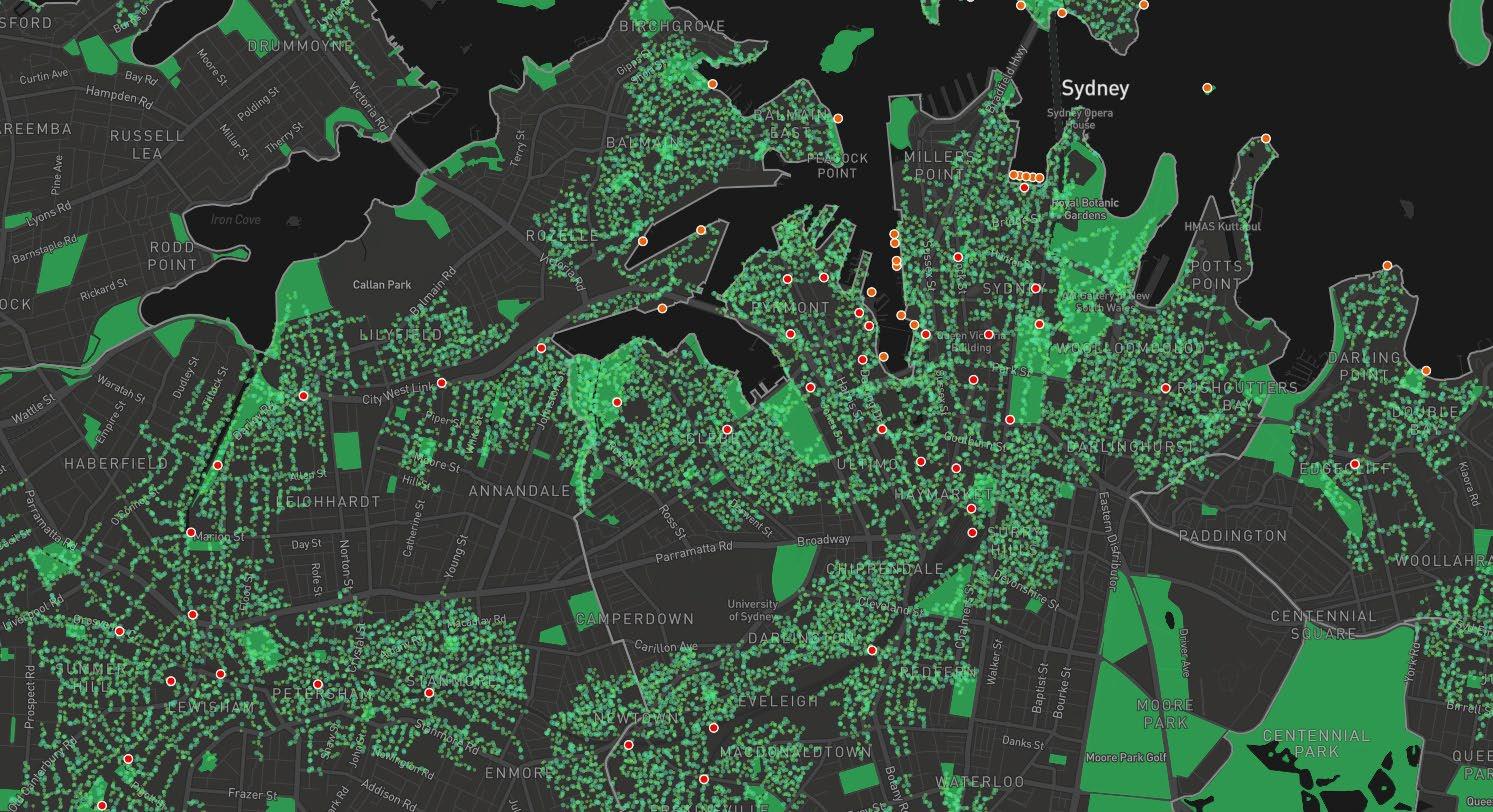
ERA-CO + WOODS BAGOT Streets Ahead / 13 100k+FewerCars $2.9bOfAddedWellbeingWealth 260kmorepeoplewill be within 300m of green space than currently $1.0b On Personal Car Savings 900 28,000 65,000 77,000 800m up to 780km of depaved roadway = between 4% and 30% of road network
ERA-CO + WOODS BAGOT Streets Ahead / 14 AheadStreets If we act now, NSW will be a state transformed – greener, happier and more community-minded. Making these changes will convert our transport hubs into local neighbourhood havens and ensure that the 'first and last mile'4 of travel is When distributedenjoyable.workingbecomesthenewnorm,ourstreetscanmakeapositiveimpactonwellbeingbybringingnatureand evenstreet-sourcedproduceto our front doors.
Meg ERA-coHeadBartholomewofImpactValuation
Meg spends most of her time thinking about how to make our cities better places for everyone. Her passion is for understanding how intangible qualities can be more transparently valued in development feasibility and for the true social costs and benefits of planning to factor in decision making and underpin responsible investment in cities. Meg has worked at all scales of settlement from remote Indigenous communities to the world’s largest cities, giving her a unique understanding of human behaviour and its spatial effects. She studied Architecture and Engineering and has a Masters in Cities from the London School of Economics.
John PrincipalPrentice&Regional Transport WoodsLeader (A&NZ)Bagot

John’s approach to architecture and urban design conveys a strong sensitivity to human experience, and he thrives on making places great through considered and sustainable design. Currently leading Woods Bagot’s architectural teams on the design of new metro stations at Sydney’s historic Central Station and Crows Nest, John was also instrumental in the design of Wynyard Walk, a pedestrian link that cuts walking time between Wynyard Station and the Barangaroo waterfront to just six minutes and makes public transport a much more attractive option. A clear and influential communicator, John is highly adept at assimilating diverse viewpoints to distil excellent outcomes.
ERA-Co is an experience consultancy that applies evidence-based thinking to create transformative places.
ERA-CO.COM
Woods Bagot is a global architecture and consultancy studio spanning design, research, data, and performance to create People Architecture.
 WOODSBAGOT.COM
WOODSBAGOT.COM
1 Houlden, V., Porto de Albuquerque, J., Weich, S. et al. (2019) A spatial analysis of proximate greenspace and mental wellbeing in London. Applied Geography, 109. ISSN 0143-6228. https://doi.org/10.1016/j.apgeog.2019.102036
2 Household wealth is more strongly related to wellbeing than household income* and leads to the lower, preferred conservative estimation. Certain income or wealth equivalents for wellbeing have been adopted by Treasury in the UK. Further investigation is required to standardise methodologies for this approach in Australia.
* ONS. (2015). Relationship between Wealth, Income and Personal Well-being. Office for National Statistics. UK. between-Wealth-Income-and-Personal-Well-being-July-2011-to-June-2012.pdfhttps://backup.ons.gov.uk/wp-content/uploads/sites/3/2015/09/Relationship-
3 Headey & Wooden. (2004). The Effects of Wealth and Income on Subjective Wellbeing. Institute for the Study of Labour (IZA). http://ftp.iza.org/dp1032.pdf
4 ‘First and Last Mile’ refers to the first and last leg of any travel using public transport.
ERA-CO + WOODS BAGOT Streets Ahead / 15
TSarah.Kay@woodsbagot.comSydney,SarahTJohn.Prentice@woodsbagot.comSydney,JohnTmeg.bartholomew@era-co.comLondon,MegContactsBartholomewUK+442072911477PrenticeAustralia+61292492590KayAustralia+61292492590WOODSBAGOT.COMERA-CO.COM
